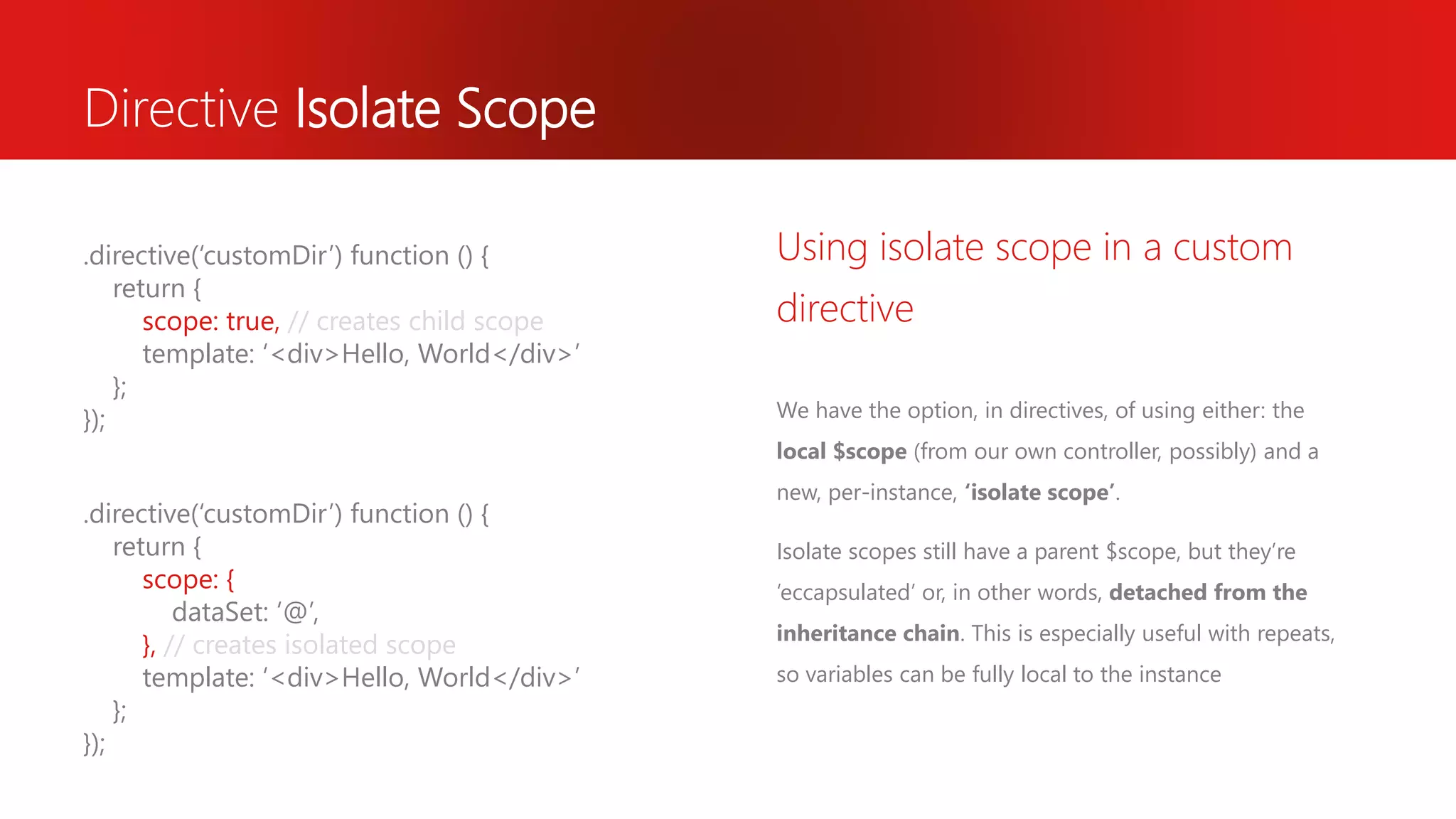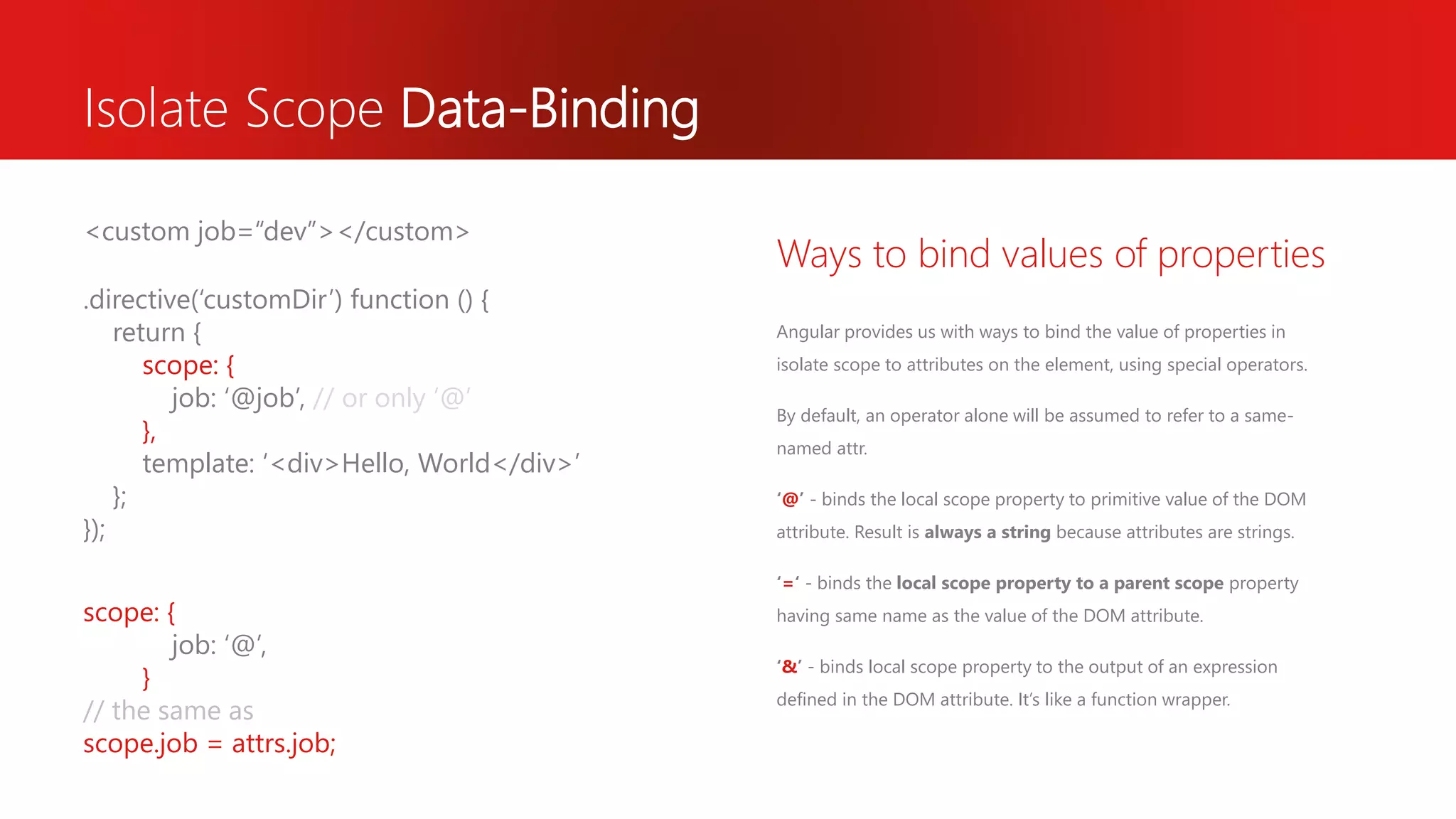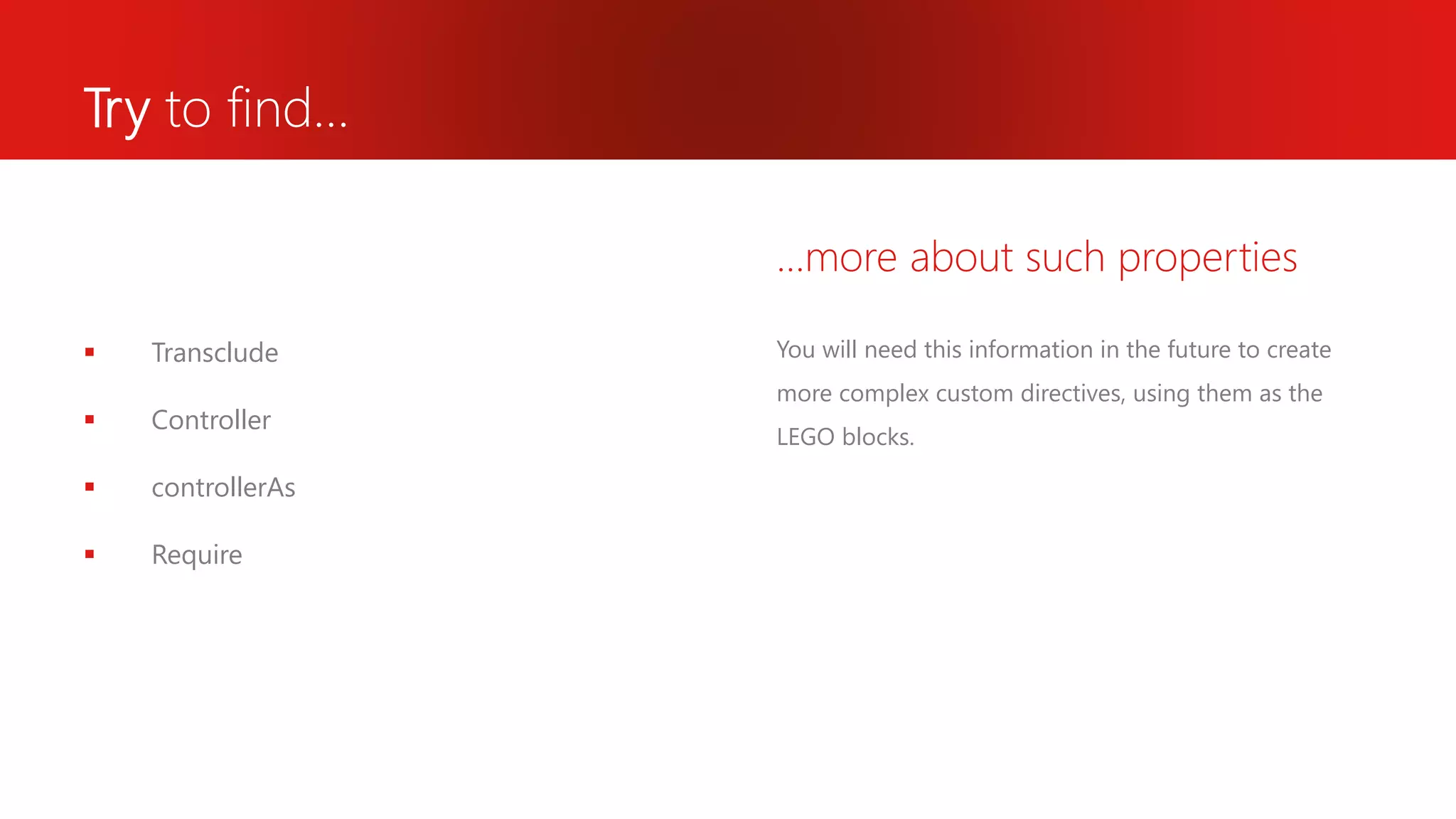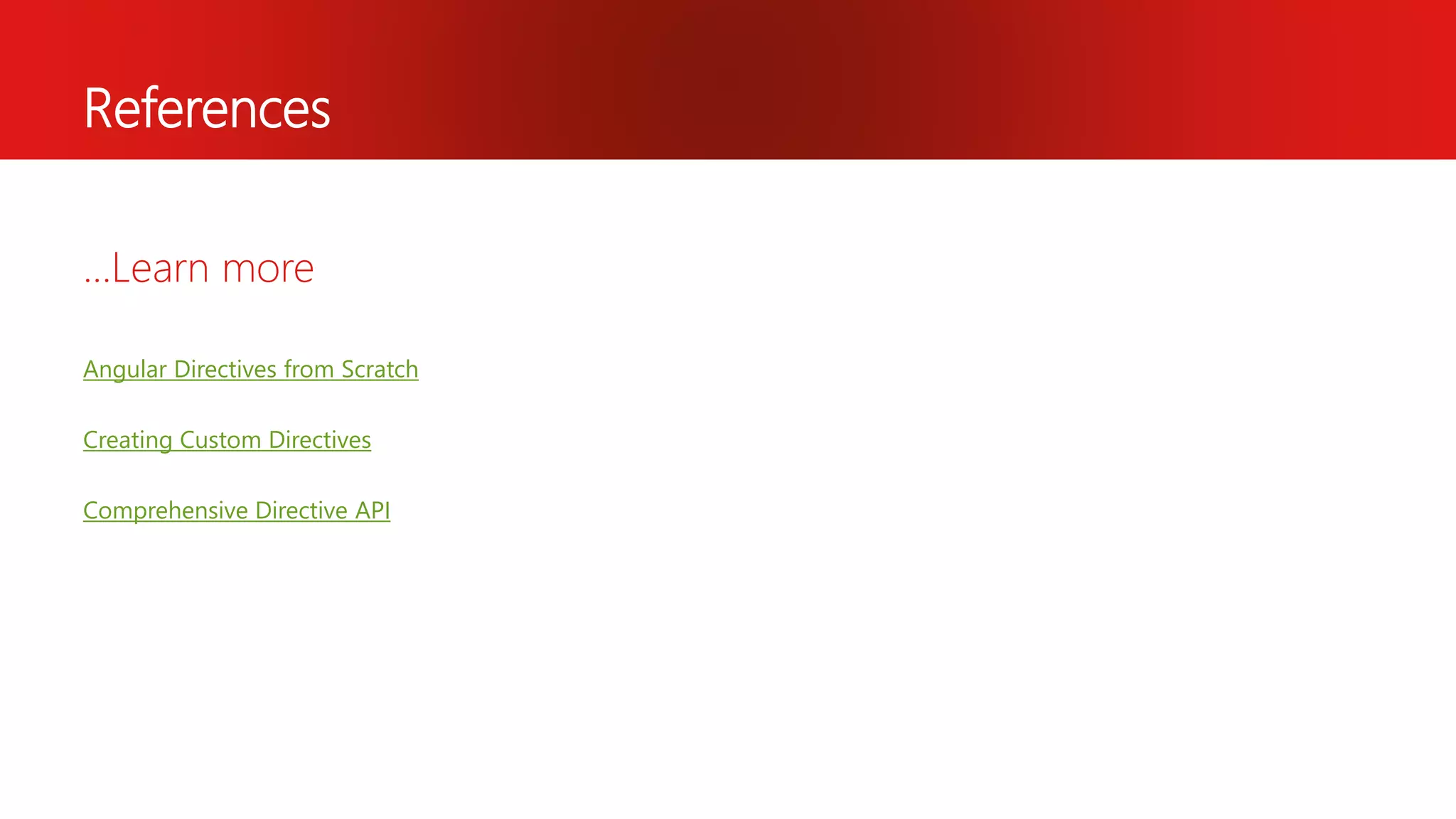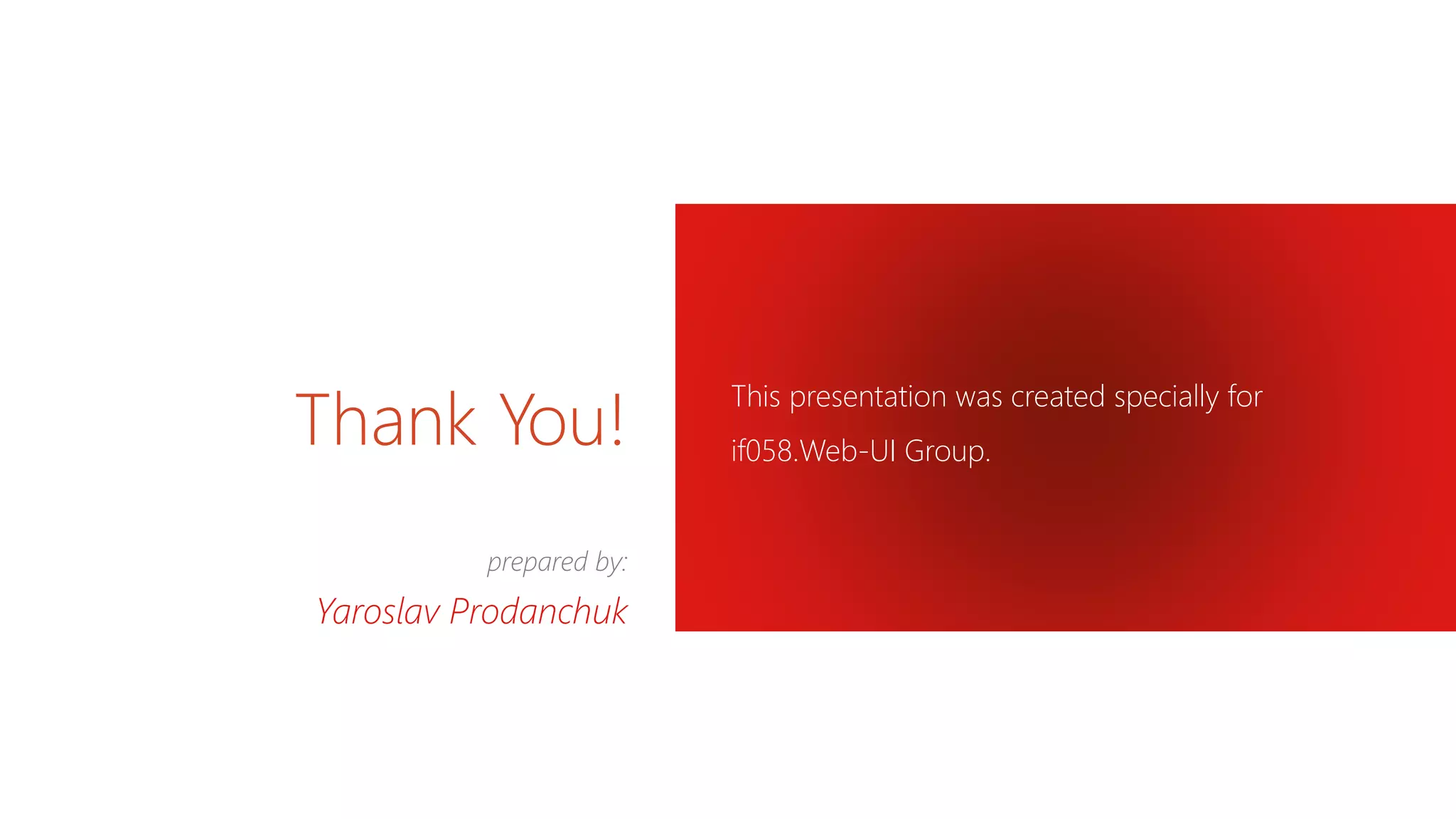The document provides an overview of creating custom directives in AngularJS, highlighting key concepts such as modularity, reusability, and the differences between built-in and custom directives. It explains the directive creation process, including naming conventions and the use of various properties, such as link functions and isolate scopes, for DOM manipulation and data binding. Additional technical details and examples are provided to guide developers in implementing effective custom directives.
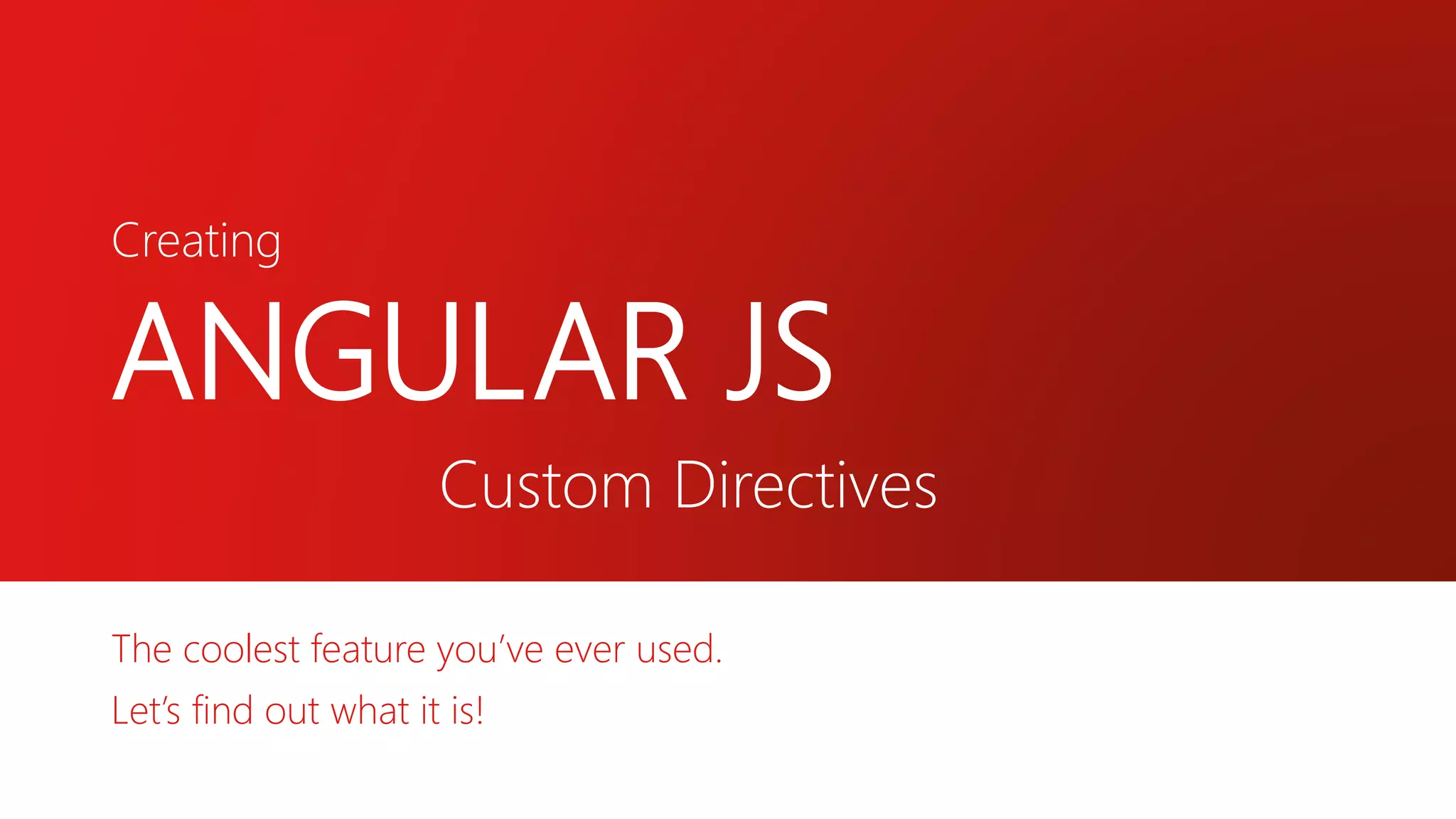
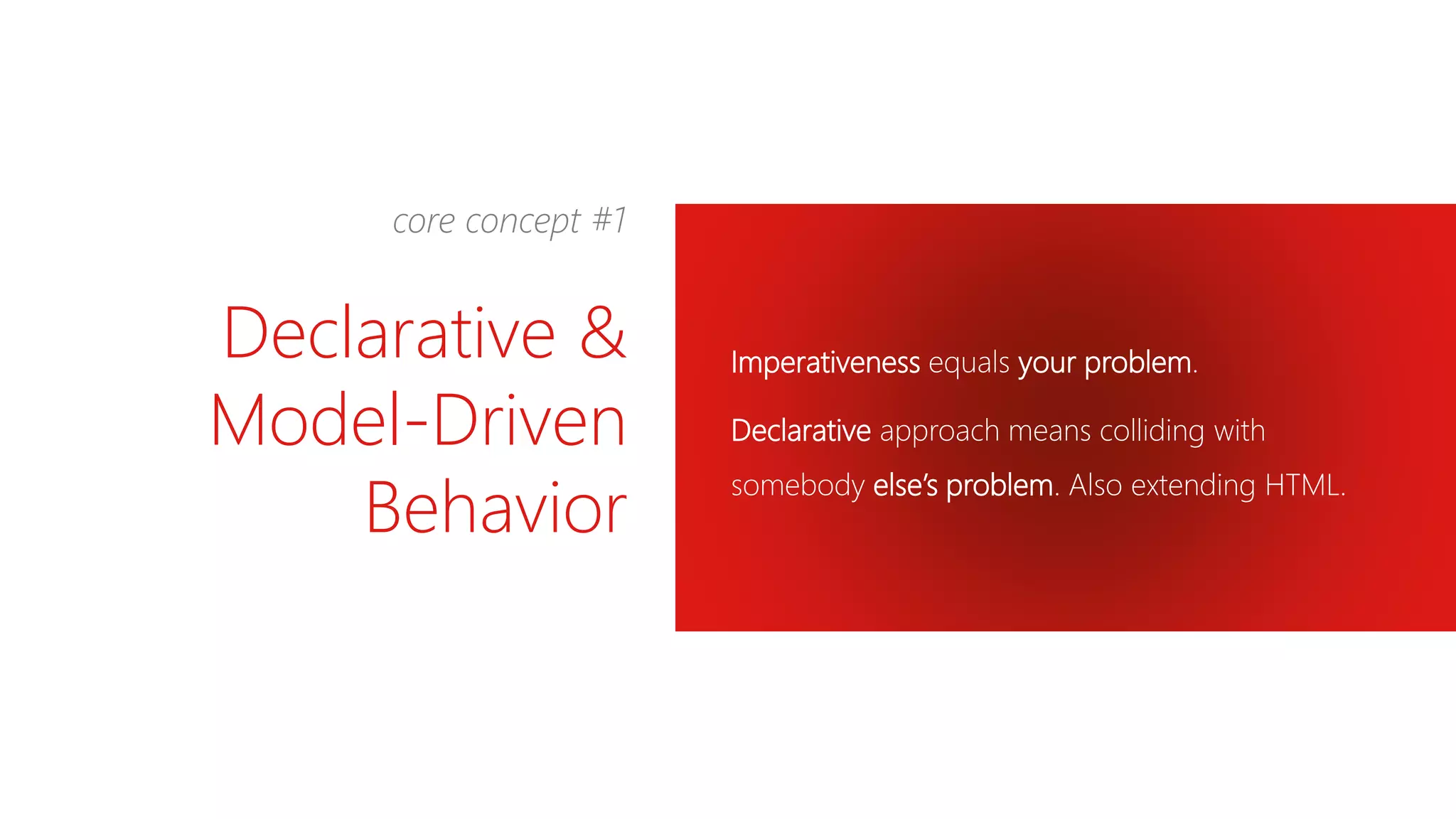
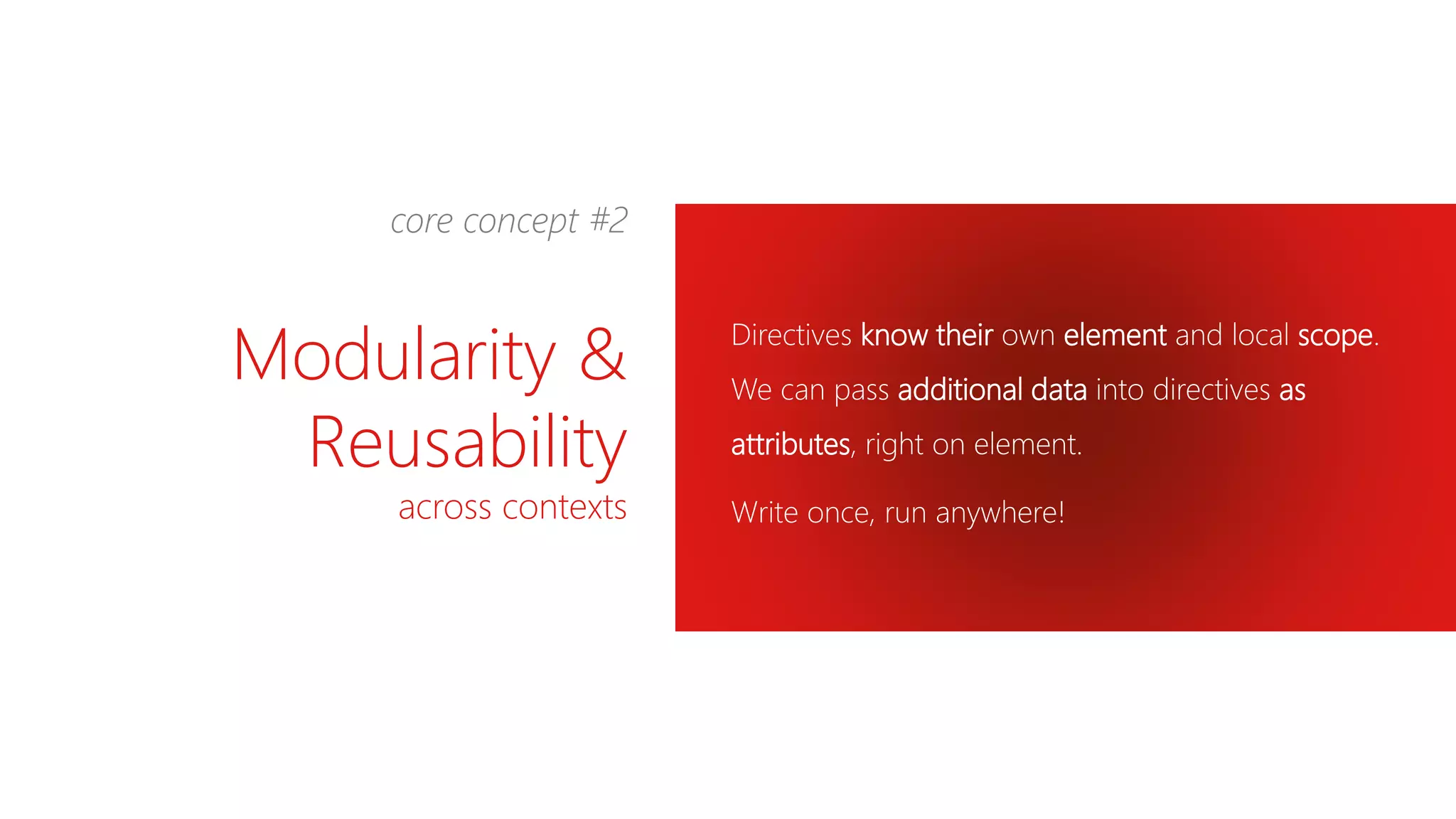
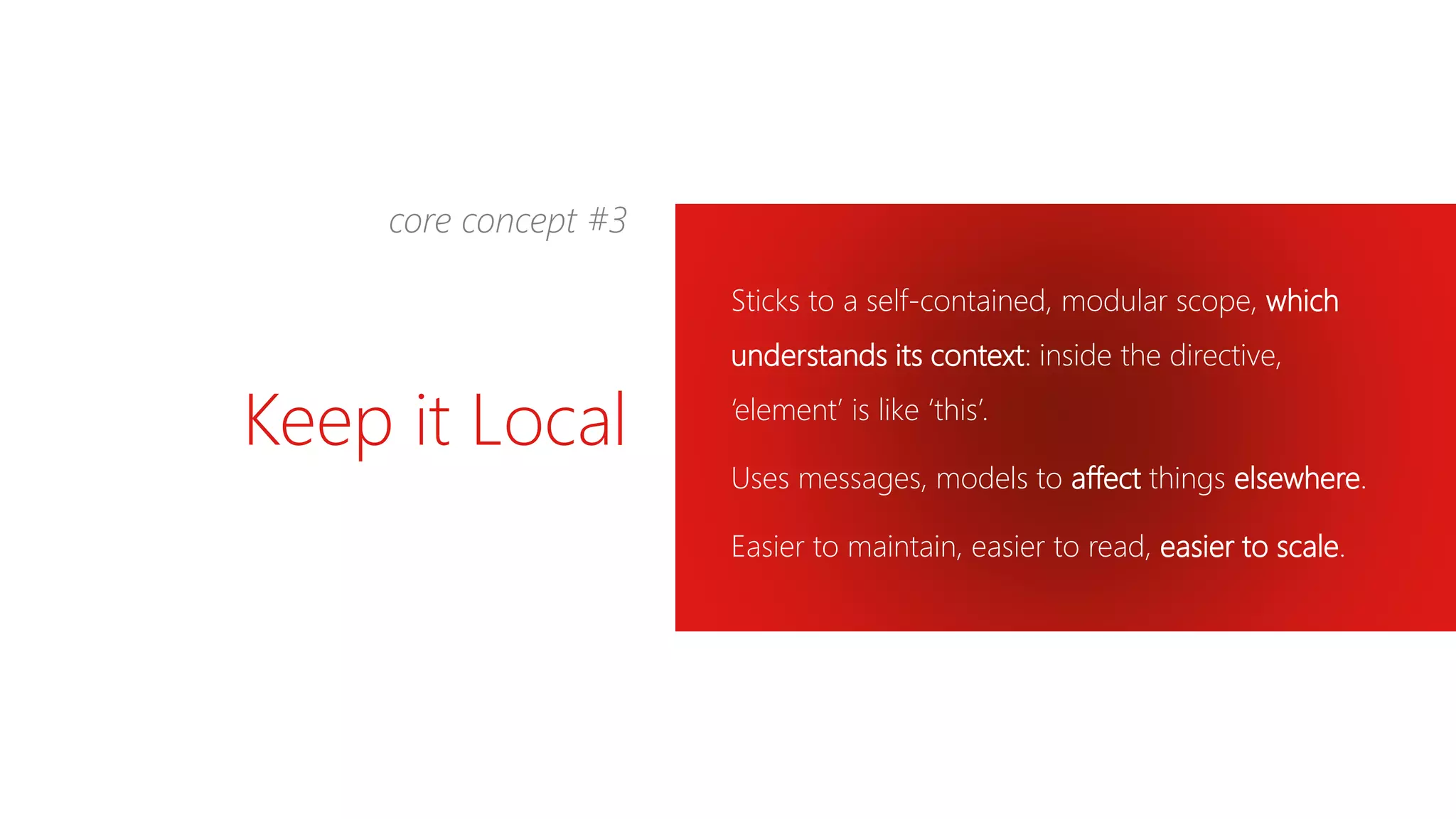
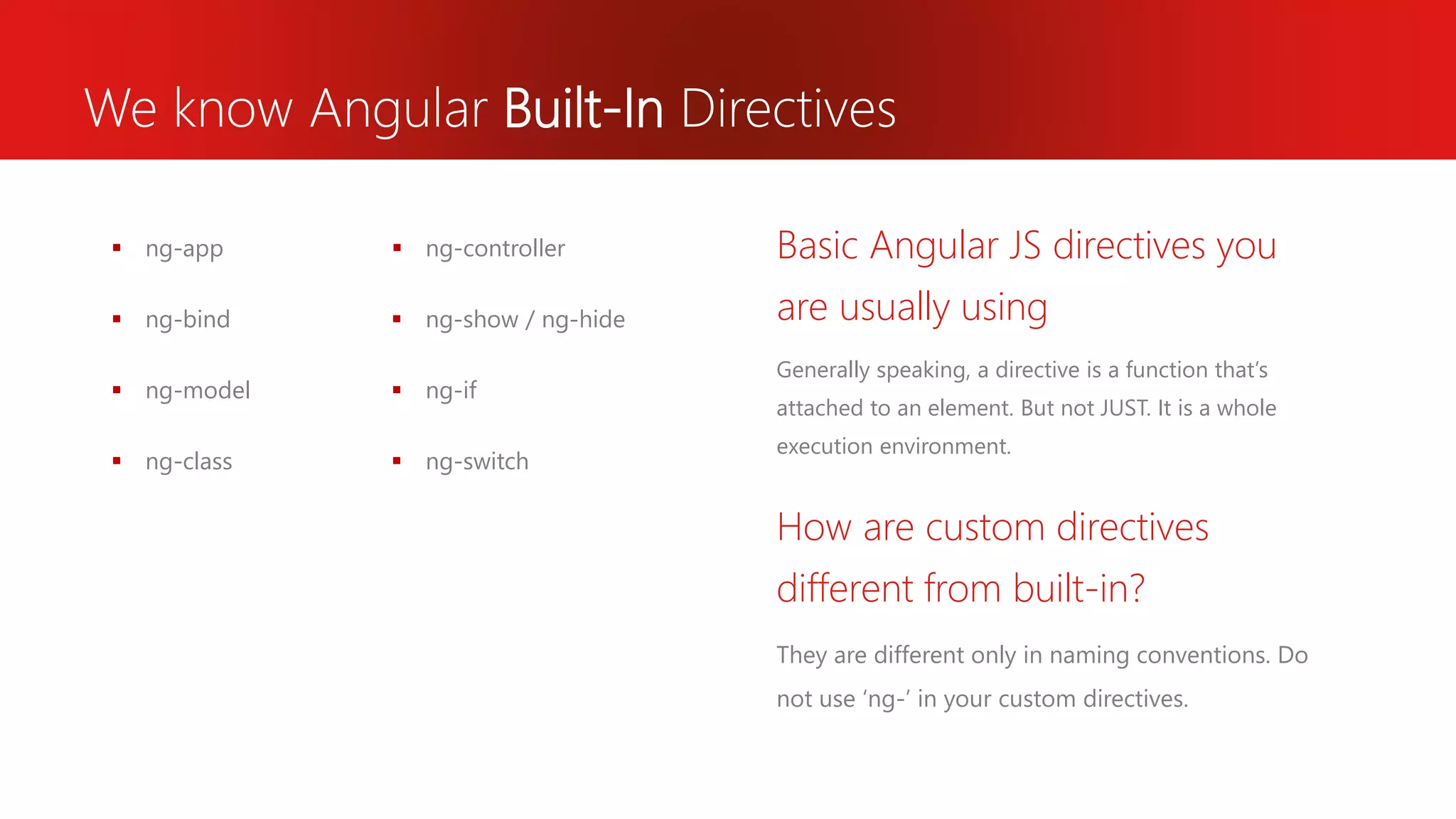
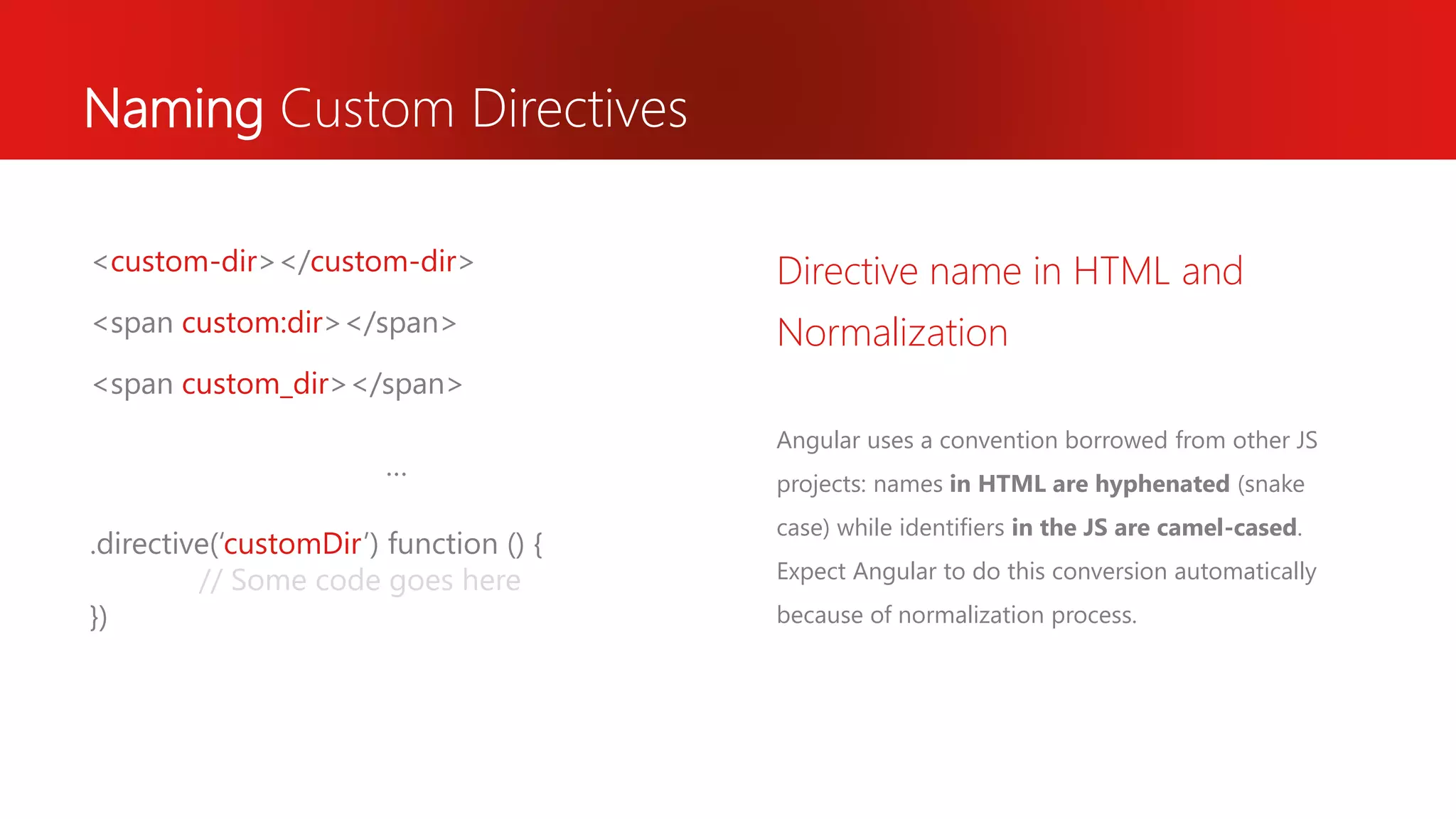
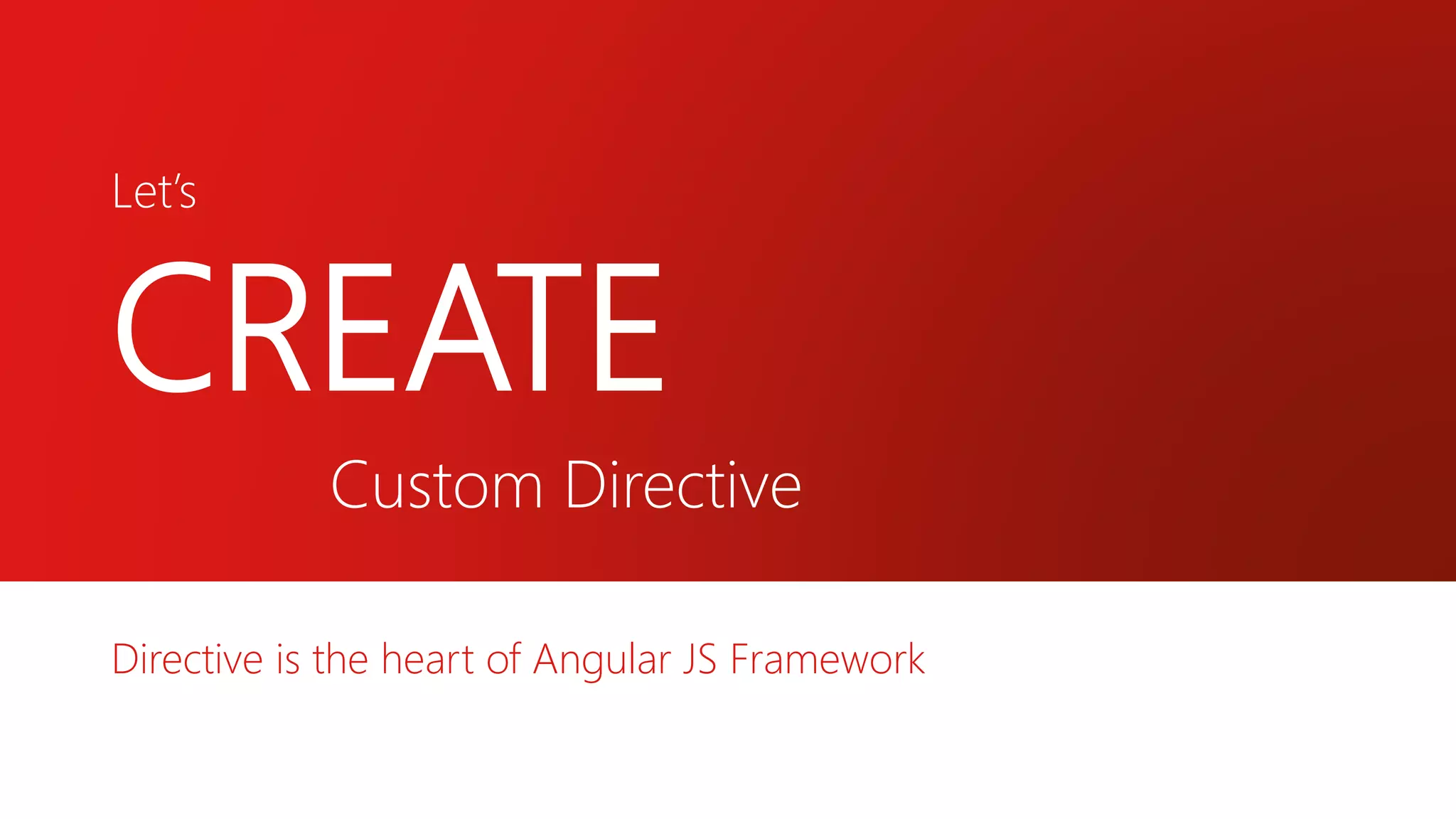
![Building Custom Directive Custom Directive Creating Process angular .module(‘moduleName’, [‘dep1’, ‘dep2’]) .directive(‘directiveName’) factoryFunction () { // Some code goes here }) .directive() is a method we call on an angular.module(), either at creation time or via reference, passing a name and a factory function The factory will return either a function or an object containing a function and other settings When we talk about generic ‘factories’, we don’t mean $factory, which is an Angular implementation service. The factory pattern is all about Functional Programming: using basic JavaScript functions to build and return naiive objects or other functions.](https://image.slidesharecdn.com/custom-angular-js-directives-151201172717-lva1-app6892/75/Custom-AngularJS-Directives-8-2048.jpg)
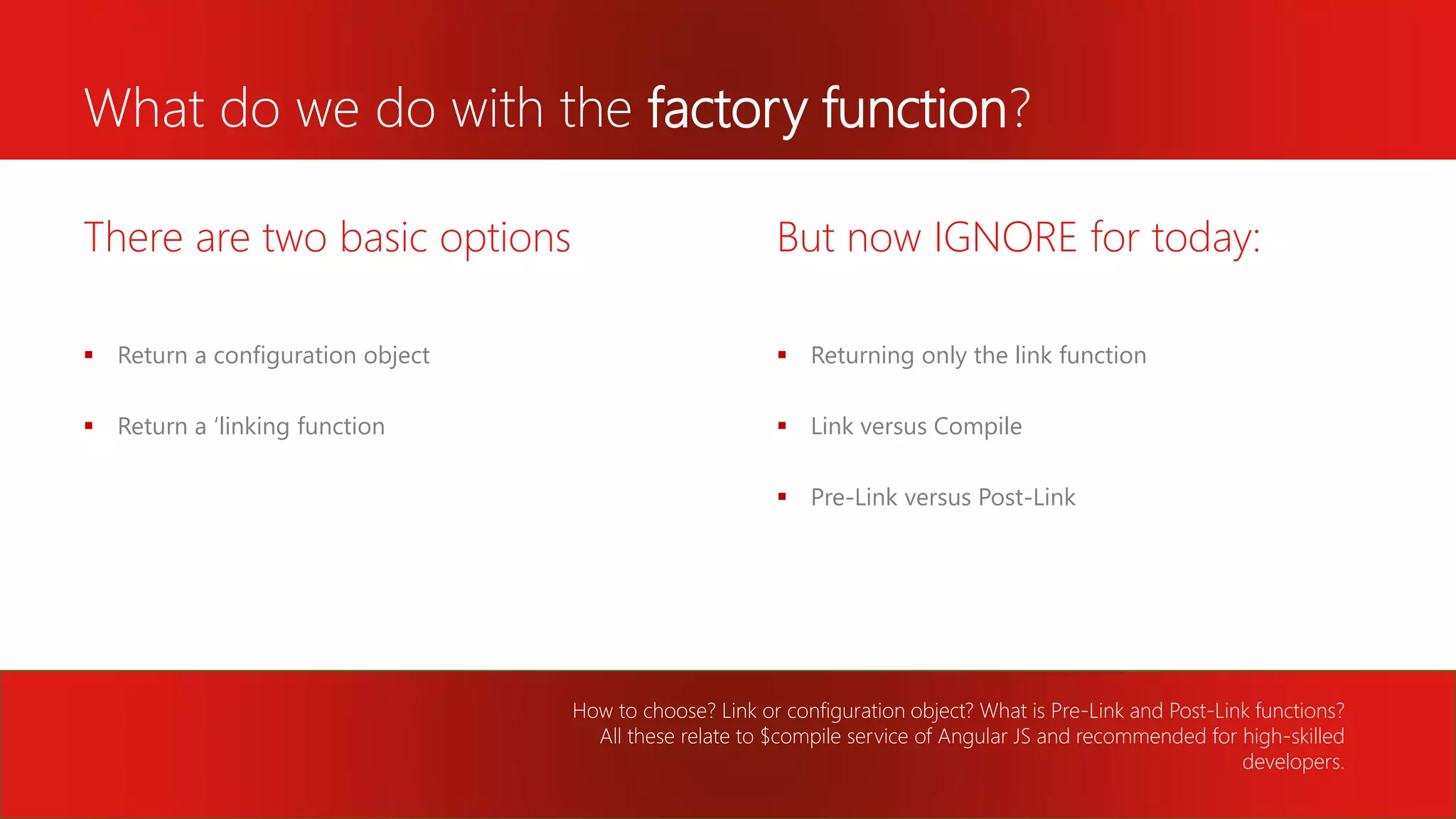
![Using Config Object Today we need to remember that directive returns an object. We may use the list of properties. Remember, link property is optional. Returning object with directives’ configurations angular.module(‘moduleName’, []) .directive(‘customDir’) function () { return { link: function (scope, element, attrs) { element.bind(‘mouseenter’, function () { }); }, restrict: ‘ECMA’, template: ‘<div>Hello, World</div>’ }; });](https://image.slidesharecdn.com/custom-angular-js-directives-151201172717-lva1-app6892/75/Custom-AngularJS-Directives-10-2048.jpg)
![Link Function Arguments Directives that want to modify the DOM typically use the link option to register DOM listeners as well as update the DOM. scope - is an Angular scope object. element - is the jqLite-wrapped element that this directive matches (declared on ‘this’). attrs - object containing the HTML attributes defined on the element, including the directive invocating itself. controller - is the directive's required controller instance(s) or it's own controller (optional). transcludeFn is a transclude linking function pre-bound to the correct transclusion scope (optional). Creating a Directive that Manipulates the DOM angular.module(‘moduleName’, []) .directive(‘customDir’) function () { return { link: function (scope, element, attrs) { element.bind(‘mouseenter’, function () { }); }, restrict: ‘ECMA’, template: ‘<div>Hello, World</div>’ }; });](https://image.slidesharecdn.com/custom-angular-js-directives-151201172717-lva1-app6892/75/Custom-AngularJS-Directives-11-2048.jpg)
![Link Function Arguments $scope is assignable, but should be reserved for angular functions to pass into a controller, other context. It is a shorthand, by which we’re calling the $scopeProvider, which is Dependency-Injecting the scope for us. scope is just our own, customizable reference for directive’s local scope. $scope VERSUS scopeangular.module(‘moduleName’, []) .directive(‘customDir’) function () { return { link: function (scope, element, attrs) { element.bind(‘mouseenter’, function () { }); }, restrict: ‘ECMA’, template: ‘<div>Hello, World</div>’ }; });](https://image.slidesharecdn.com/custom-angular-js-directives-151201172717-lva1-app6892/75/Custom-AngularJS-Directives-12-2048.jpg)
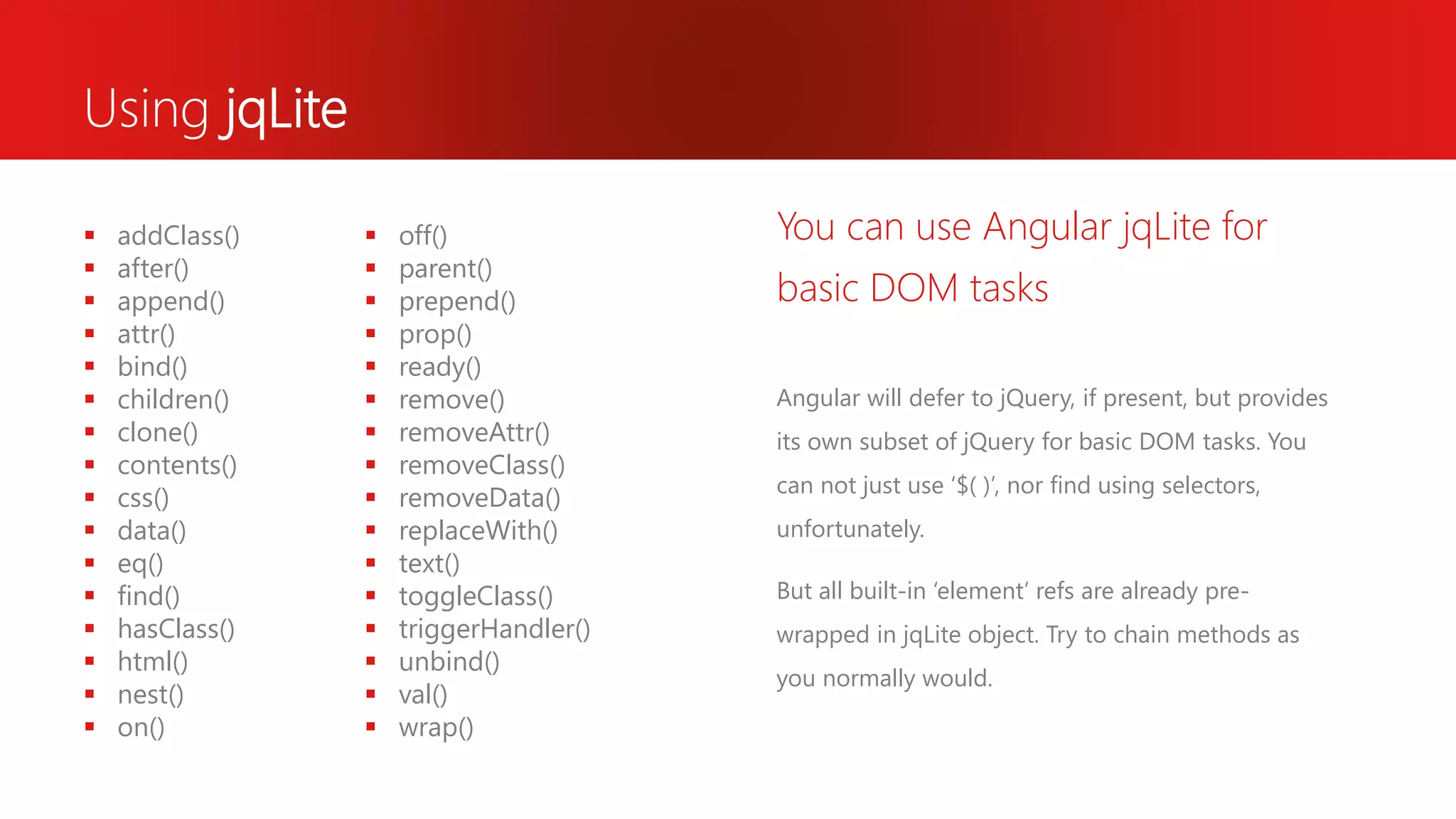
![Using jqLite $(‘selector’).bind(‘mouseenter’, function () {}); The same as.. angular.module(‘moduleName’, []) .directive(‘customDir’) function () { return { link: function (scope, element, attrs) { element.bind(‘mouseenter’, function () { do some stuff.. }); }, restrict: ‘ECMA’, template: ‘<div>Hello, World</div>’ }; }); Let’s review another ‘modern’ directives’ options…](https://image.slidesharecdn.com/custom-angular-js-directives-151201172717-lva1-app6892/75/Custom-AngularJS-Directives-14-2048.jpg)
![Templating in Directive template – property where we can store our template as a string. templateUrl – this property allows us to load template from a file, using path. Use the template you need angular.module(‘moduleName’, []) .directive(‘customDir’) function () { return { link: function (scope, element, attrs) { element.bind(‘mouseenter’, function () { }); }, restrict: ‘ECMA’, template: ‘<div>Hello, World</div>’, // or templateUrl: ‘path/dir/template.html’ }; });](https://image.slidesharecdn.com/custom-angular-js-directives-151201172717-lva1-app6892/75/Custom-AngularJS-Directives-15-2048.jpg)
![Restrict Property Remember that directives are re-usable. We can restrict the usage of a directive to (a) specific context(s). Defaults to ‘A’. Stack as a single string ‘EACM’. ‘E’lement, ‘A’ttribute, ‘C’lass, co’M’ment. Memorize like ECMAScript <custom></custom> <span custom=“somevalue”></span> <span class=“custom_dir”></span> <!– directive: custom somevalue --> angular.module(‘moduleName’, []) .directive(‘customDir’) function () { return { restrict: ‘ECMA’, }; });](https://image.slidesharecdn.com/custom-angular-js-directives-151201172717-lva1-app6892/75/Custom-AngularJS-Directives-16-2048.jpg)
![Replace Property [DEPRECATED] By default, a directive element will wrap the contents of a template. The ‘element’ object will be the outer directive element. To instead replace the directive element (and object) with the contents of the template, use replace: true This is especially critical when declaring as an element. Wrap without showing directive element angular.module(‘moduleName’, []) .directive(‘customDir’) function () { return { replace: true, template: ‘<header>Some info</header>’ }; }); <body> <custom-dir> <header> Some info </header> </custom-dir> </body>](https://image.slidesharecdn.com/custom-angular-js-directives-151201172717-lva1-app6892/75/Custom-AngularJS-Directives-17-2048.jpg)
